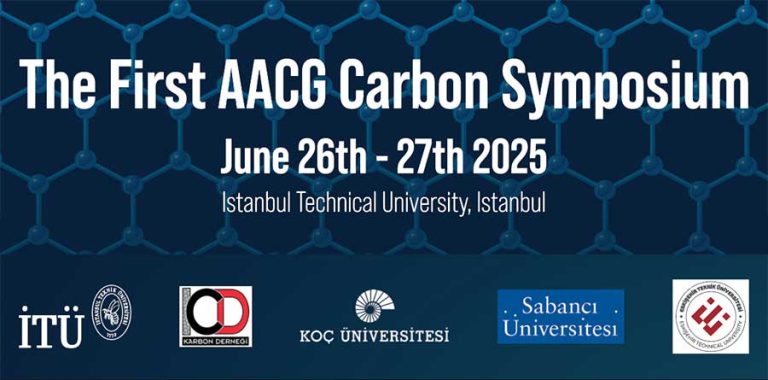June 26th-27th 2025 | Istanbul Technical University, Istanbul
Karbon Derneği
Türkiye’de Karbon Derneği kurma fikri 2000 yılından eski tarihlere dayanmaktadır. Karbon Bilimi ve Teknolojisi ile uğraşan Türk araştırmacılar ve mühendisler ilk olarak 1998 yılında Antalya’ da gerçekleştirilen “Design and Control of Advanced Carbon Materials for Enhanced Performance” isimli Nato Yaz Okulunda bir araya gelmişlerdir. Bu spesifik olarak Karbon temalı ilk toplantı olmuştur. 24-25 Nisan 2008 tarihinde İstanbul Teknik Üniversitesi Gümüşsuyu Yerleşkesinde gerçekleştirilen “Development and Technology of Carbons German-Turkish Joint Symposium” sırasında ilk olarak toplanan dernek kurucu üyeleri ilk toplantılarını yaparak dernek kurma fikrini hayata geçirmişlerdir.
Amaç ve Faaliyet Alanları
Derneğin amacı Karbon bilim ve teknolojisinin ülke yararına gelişmesi,. İlerlemesi yolunda çalışmalar yapmak ve yapılan çalışmaları desteklemek, konuyla ilgili kişi ve kuruluşlar arasında bilgi alışverişini, anlayış ve işbirliğini ortak yarar anlayışı çerçevesinde kurulmasını ve devam ettirilmesini desteklemek teşvik etmek ve geliştirmektir.
Karbon Takvimi
Karbon Takvimi
Duyurular
Derneğimizce yapılan duyurular ve genel kurul toplantıları
Fotoğraflar
Sempozyum ve gezilerden fotoğraf kareleri
Linkler
Dünya çapındaki karbon dernekleri ve derneğimize üye kuruluşlar










